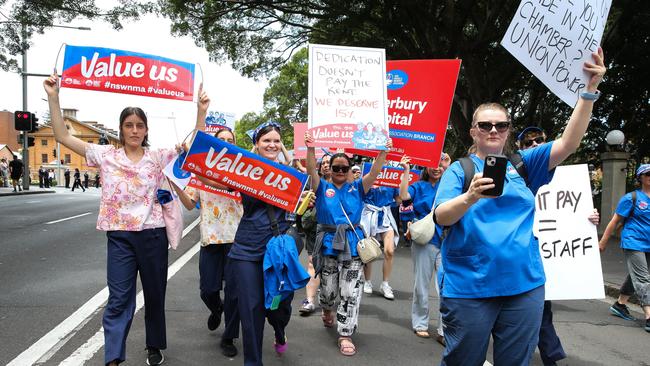Wage growth slows further in support of Reserve Bank’s rate cut call
Pay packets grew at their slowest rate in almost three years in the December quarter, supporting the Reserve Bank’s reasoning to finally cut the cash rate on Tuesday.

Pay packets grew at their slowest rate in almost three years in the December quarter as wage gains continued to ease in line with the cooling economy, supporting the Reserve Bank’s reasoning to finally cut the cash rate on Tuesday.
Annual wages growth eased to 3.2 per cent in the 12 months to December down from a 3.6 per cent reading in September, the Bureau of Statistics said on Wednesday, as pay pressures continued to moderate from their post-pandemic peaks.
The decline, which was in line with economists’ expectations, reflected continued weakness in the private-sector labour market where job gains have been far outpaced by the booming growth of government-aligned employment.
In the year to December, private sector pay packets rose by 3.3 per cent, the ABS figures showed, while public sector wage rises – covering government workers including police, nurses, teachers and bureaucrats – were more moderate at 2.8 per cent.
After almost 18 months of strong public sector wage hikes as employees inked generous pay agreements with federal and state governments, KPMG economist Terry Rawnsley said growth was returning to historical levels.
“Moderating public sector wages is also a positive sign for all levels of government trying to manage their budgets,” he said.
The RBA is closely monitoring the labour market for signs that bumper job growth and near-record low unemployment does not hold inflation outside its 2-3 per cent target band. It is particularly cognisant of the labour-intensive services sector where price growth is still running at 4.2 per cent.
While the latest wages data was in line with the RBA’s estimates, Abhijit Surya, a senior economist at Capital Economics, said the central bank wouldn’t “breathe easy just yet”.
“With productivity growth set to languish in the near term, the bank will likely remain concerned about elevated unit labour cost growth,” he said, also pointing to a pipeline of large pay agreements in the public sector and award wage hikes for aged-care workers.
Labor lauded the fresh figures as evidence it had delivered “five consecutive quarters of wages growing above inflation”.
However, that claim has been achieved in part by the temporary reduction in the headline inflation rate due to power bill rebates.
“We’ve been able to get real wages growing again after they were falling for a prolonged period under our predecessors when we came to office,” Treasurer Jim Chalmers said in Brisbane.
Similarly, the union movement seized on the wages data as evidence Labor’s industrial relations reforms – including multi-employer bargaining, a crackdown on labour hire and an overhaul of regulations in the “gig economy” – were translating into higher pay.
“Without these new rights, the average Australian would have their pay cut by $3100, which would be devastating to people’s cost of living,” ACTU secretary Michele O’Neil declared.
The RBA will receive another read on the job market on Thursday with figures expected to show the unemployment rate inched higher to 4.1 per cent in January, from 4 per cent in December.




To join the conversation, please log in. Don't have an account? Register
Join the conversation, you are commenting as Logout